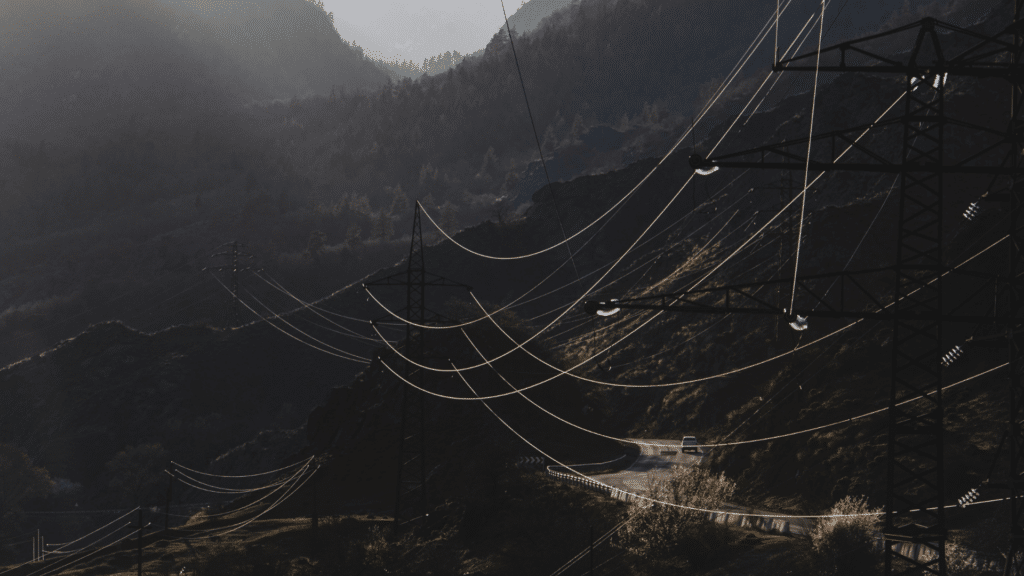The necessary evolution of electricity contracting in railways
This is the second installment of the Topic of the Month: Energy and Transport regulation, links between the sectors
Railways are the largest electricity user in most EU Member States.
Rail electric traction is very intensive in the use of electricity, and there is a high degree of electrification in European railways. Around 60% of rail infrastructure in the European Union is electrified, reaching around 80% of traffic[1]. While there might be some room to electrify more infrastructure, most lines with a minimum amount of traffic are already electrified.
The high degree of electrification makes railways the poster child of low carbon emission in transport, calling for a modal shift from other transport modes (air and road) to railways, both for passenger and freight transportation. There is room to reduce emissions in railways, but rather than electrifying more infrastructure, the future is in reducing the use of diesel in non-electrified lines through the use of electric batteries, hydrogen, etc., making sure electricity is not generated from fossil fuels, and improving efficiency (lighter rolling stock, regenerative braking, etc.).
However, the recent spike in electricity prices, combined with increasing competition in the provision of rail transport services, has raised new attention to how electricity is managed in the sector.
Who is actually buying electricity for the sector? Is it the Infrastructure Managers? Have Railway Undertakings the effective right to choose the electricity provider? Is railways as an industry sophisticated in the contracting of electricity?
The following paragraphs show that there is room for improvement[2].
Rail infrastructure and electricity supply in EU
Rail Infrastructure Managers have the monopoly on the operation of rail infrastructure, including the operation of the electric supply equipment for traction current: substations, supply cables between substations and contact wires, catenaries and supports. Sector-specific legislation imposes on them the obligation to provide access to such assets to Railway Undertakings, which provide passenger and freight transport services under different degrees of competition. Infrastructure Managers are obliged to provide a minimum access package, which includes access to electricity supply equipment, fully described in a network statement document, at regulated prices supervised by national regulatory bodies which must cover direct costs and can add a mark-up if the market can bear it, as imposed in the Recast Directive[3].
The provision of traction current, however, is not part of the minimum access package to be provided by the Infrastructure Manager. On the contrary, it is considered in the sector specific legislation as an “additional service”. Competition is possible, and prices are only regulated in case there is only one supplier, in which case charges cannot exceed the cost of providing the service plus a reasonable profit (Art. 31(8) Recast Directive). Traction current services must be invoiced separately from the supply of access to electric equipment.
The reality, however, is that in most Member States the Infrastructure Manager continues to be the only provider of traction current services to Railway Undertakings. This is the case at least in 15 Member States, as recently identified by the association of national rail regulators IRG-rail[4]. In some Member States national law even prohibits Railway Undertakings to acquire electricity in the market (this is the case in Croatia and Spain).
Traditionally there has been little pressure from Railway Undertakings to change the staus quo. The incumbent Railway Undertakings, despite the obligation of vertical separation, often have some degree of connection with the Infrastructure Manager (they tend to be part of the same holding). Newcomers, usually smaller freight companies, benefit from discounts granted to the Infrastructure Manager due to its large size, having little incentive to change provider as it is was traditionally understood that they would not get better conditions on their own due to their small size. Operative constraints exist, as on-board meters are only available in 11 Member States. In most Member States costs tend to be distributed among Railway Undertakings by the Infrastructure Manager according to mere estimates, even if they have been improving thanks to the use of sophisticated algorithms.
Look at the electricity contracting conditions
Over the last months, fresh attention has been paid to electricity contracting conditions. On the one hand, competition is maturing. Competition is emerging in high-speed passenger services (Italy, Spain, France), and these newcomers have large electricity consumptions. Newcomers in the freight market are increasing in size. On the other hand, the spike in electricity prices has made electricity one of the main cost elements for certain rail services, even beyond other major cost centers such as track access charges and salaries.
Firstly, Railway Undertakings are increasingly requesting more transparency in the distributions of electricity costs among the Railway Undertakings making use of the infrastructure. As in most Member States it is the Infrastructure Manager acquiring the electricity in the market and passing the cost to a number of Railway Undertakings, the fair distribution of such costs, ensuring no discrimination is of paramount importance. As costs are mostly distributed making us of mere consumption estimates, more sophisticated algorithms for the distribution of costs are being implemented. The next step is to evolve from mere estimates to actual consumption metering, which requires not only the installation of expensive meters in rolling stock, but also coordination across all players.
Secondly, Railway Undertakings have started to scrutinise how electricity is acquired in the market by the Infrastructure Manager. They want to make sure electricity is acquired by the Infrastructure Manager at the best conditions. Less sophisticated practices such as buying on the spot, have been criticised, and a more active management to stabilise prices has been requested in the form of future contracts and other derivatives. Railway Undertakings demand at least participation in the process for the acquisition of electricity by the Infrastructure Manager, forming a pool, a good practice in the Netherlands that has spread, for instance, to Spain, under the supervision of the regulatory body, to avoid collusion.
However, the market should evolve as to ensure Railway Undertakings the right to directly acquire electricity in the market, and not from the Infrastructure Manager. At the moment, the right of Railway Undertakings to choose their electricity supplier is only ensured in a limited number of Member States. Certainly, there is no insurmountable obstacle for Railway Undertakings to directly contract electricity independently from the Infrastructure Manager, as this is already happening in the largest rail systems in the European Union: France and Germany.
The German case
The German case is interesting as it was the Federal Court of Justice who decided already back in 2010 that Railway Undertakings had the right to choose the electricity provider, based on EU electricity rules. The corporation in charge of energy was unbundled from the Infrastructure Manager (even if they are still part of the same holding), and detailed regulation was adopted to make the right to choose the provider effective, including the obligation to deploy meters in rolling stock.
The German example shows that it is possible for Railway Undertakings to choose the electricity provider according to the EU electricity rules. However, a more active role of the national regulatory bodies, providing clear rules, and maybe the Commission at the EU level, could accelerate the necessary evolution to a more dynamic electricity market, also in railways.
[1] European Commission, Electrification of the Transport System, Studies and reports, Directorate-General for Research and Innovation, 2017, p. 13.
[2] See for instance the policy brief authored by Finger, Montero and Serafimova, “Electricity and Infrastructure Managers: Is there a need for regulation?”, Policy Paper Florence School of Regulation, issue 2023/03, February 2023.
[3] Directive 2012/34/EU, of the European Parliament and of the Council, of 21 November 2012, establishing a single European railway area (Recast Directive).
[4] Independent Regulators’ Group – Rail Working group Charges for Service Facilities, Overview Paper on Charges for Traction Current, November 2022.






